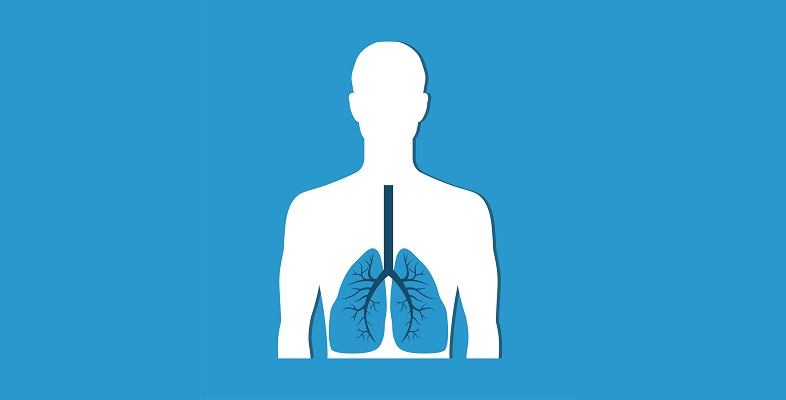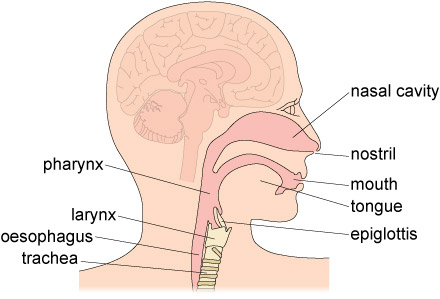1.1.1 Upper respiratory tract
Air enters the body through the nostrils and passes into the nasal cavities (Figure 2). Cilia (hair-like organelles) within the nasal mucosa provide a continuous beating movement to move air particles along the nasal cavities, where they are warmed and moistened. This action helps in the detection of smells and traps potentially harmful particles, preventing them from entering the rest of the respiratory system.
From the nasal cavities, the air passes to the pharynx (throat) at the back of the mouth where it is joined by air that has entered the system through the mouth.
At the base of the pharynx are two openings:
- One leads to the larynx (which contains the voice box and Adam’s apple), from which air passes into the trachea or windpipe, a hollow tube kept permanently open by rings of cartilage (Figure 2).
- The other opening is to the entrance of the oesophagus, near the beginning of the digestive tract.
Food is normally prevented from getting into the trachea by the movement of the epiglottis, a small flap of tissue that closes the larynx during swallowing. If you have ever had food go down ‘the wrong pipe’ (i.e. into the respiratory system), you know that the immediate response is to cough in an effort to expel the foreign material from the lungs.
Question 1 A situation
a.
trachea
b.
nasal cavity
c.
mouth
d.
pharynx
e.
oesophagus
The correct answer is a.
Answer
The chicken is likely to be stuck in John's trachea and is obstructing the air in the pharynx from reaching the lungs. Targeting the nasal cavity, mouth or pharynx will not help to restore airflow because these structures are all upstream of the trachea. Doctors will attempt to remove the obstruction and if unsuccessful, will probably make a small hole in the trachea below the obstruction (a procedure called a tracheotomy) and insert a tube that will allow air to flow directly into the lungs.
The nasal cavities, pharynx and larynx form the upper respiratory tract and are the areas that are usually affected by the common cold virus.

